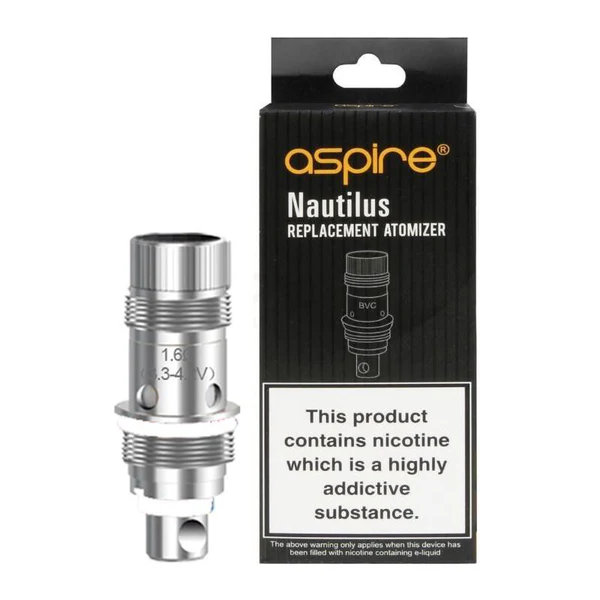
Vaping has become a popular alternative to traditional smoking, offering a variety of experiences through different devices and accessories. One of the most crucial components of a vape device is the coil. Understanding vape coils is essential for anyone looking to optimize their vaping experience, whether they are beginners or seasoned vapers. This guide delves into the intricacies of vape coils, their types, how they work, and how to maintain them for the best performance.
What is a Vape Coil?
A vape coil is a small, replaceable component of a vape device responsible for heating the e-liquid and turning it into vapor. It consists of a coil of wire and a wick, usually made from cotton. The wire heats up when electricity from the battery passes through it, causing the E-liquid absorbed by the wick to evaporate and produce vapor. The type of wire, its resistance, and the way it is wound all affect the performance of the coil.
Types of Vape Coils:
- Kanthal Coils:
Kanthal is a popular material for vape coils, known for its durability and ease of use. It is an alloy of iron, chromium, and aluminum. Kanthal coils are ideal for wattage vaping as they have a high resistance and are relatively easy to work with. They are favored for their ability to provide a consistent and steady heat.
- Nichrome Coils:
Nichrome, an alloy of nickel and chromium, is another common material used for vape coils. It heats up faster than Kanthal, which can be beneficial for those seeking quicker ramp-up times. However, it is less durable and may not last as long as Kanthal coils. Nichrome coils are also primarily used for wattage vaping.
- Stainless Steel Coils:
Stainless steel coils are versatile and can be used for both wattage and temperature control vaping. They are known for their clean and pure flavor production. Stainless steel is durable, resistant to corrosion, and offers a balance between ramp-up time and longevity. It comes in different grades, with SS316L being the most commonly used for vaping.
- Nickel (Ni200) Coils:
Nickel coils are specifically designed for temperature control vaping. They have a low resistance and can be used to accurately control the temperature of the coil, preventing dry hits and burnt wicks. However, they are not suitable for wattage mode due to their high sensitivity to heat and low resistance.
- Titanium Coils:
Titanium coils are also used in temperature control vaping. They offer precise temperature control and are known for their clean flavor production. However, they must be used carefully, as overheating can cause the titanium to oxidize, which can be harmful if inhaled.
How Vape Coils Work?
The primary function of a vape coil is to heat the e-liquid until it vaporizes. Here’s a step-by-step breakdown of how it works:
Power Supply: The battery in the vape device supplies power to the coil.
Heating Element: The wire in the coil heats up as the electrical current passes through it.
Wicking Material: The cotton wick absorbs the e-liquid from the tank or reservoir.
Vaporization: As the coil heats up, it vaporizes the e-liquid soaked in the wick.
Inhalation: Using the mouthpiece, the user inhales the vapor.
The efficiency of this process depends on several factors, including the type of wire, the coil’s resistance, the wicking material, and the power setting of the device.
Coil Resistance and Ohm’s Law:
Understanding coil resistance is crucial for optimizing your vaping experience. Resistance is measured in ohms (Ω) and determines how much current flows through the coil at a given voltage. According to Ohm’s Law, the resistance of the coil affects the power output (wattage) and the heat produced.
Low Resistance (Sub-ohm) Coils: Coils with a resistance below 1 ohm are known as sub-ohm coils. They produce more vapor and are suitable for direct-to-lung (DTL) vaping. Sub-ohm coils require more power and result in larger clouds and intense flavors.
High Resistance Coils: Coils with a resistance above 1 ohm are suitable for mouth-to-lung (MTL) vaping, mimicking the draw of a traditional cigarette. They require less power and produce less vapor, making them ideal for a discreet vaping experience.
Maintaining and Replacing Vape Coils:
Proper maintenance of vape coils can extend their lifespan and improve the vaping experience. Here are some tips for maintaining your coils:
- Prime Your Coils:
Before using a new coil, it is essential to prime it. Priming involves soaking the wick in e-liquid to ensure it is fully saturated before applying heat. This prevents dry hits and prolongs the coil’s lifespan.
- Use the Right E-Liquid:
Using the appropriate e-liquid can significantly impact coil longevity. E-liquids with high vegetable glycerin (VG) content can clog coils faster than those with higher propylene glycol (PG) content. Also, avoid e-liquids with excessive sweeteners as they can gunk up the coils.
- Avoid Chain Vaping:
Allowing your coil to rest between puffs can prevent overheating and burning of the wick. Chain vaping, or taking multiple hits in quick succession, can shorten the coil’s lifespan.
- Clean Your Coils:
If your coil is not too worn out, cleaning it can restore its performance. Remove the coil and rinse it under warm water, then dry it thoroughly before reusing. This can help remove residual e-liquid and extend the coil’s life.
- Replace When Needed:
Despite your best efforts, coils will eventually wear out and need replacing. Signs that it’s time to replace your coil include a burnt taste, reduced vapor production, and gurgling sounds. Regularly replacing coils ensures a consistent and enjoyable vaping experience.